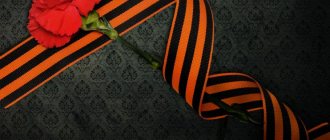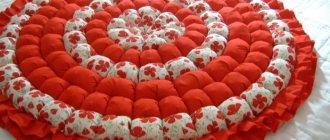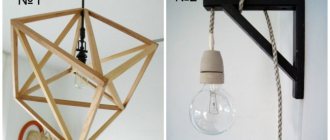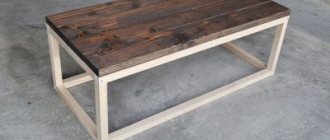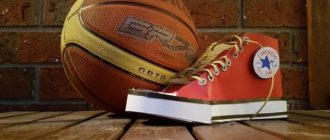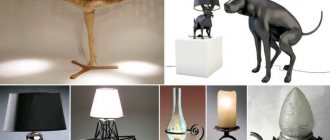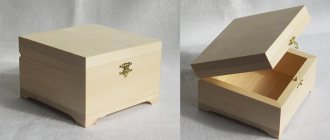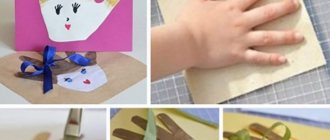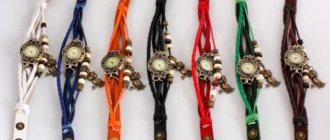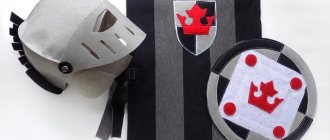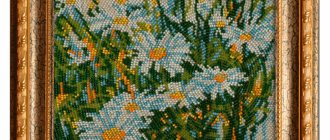How to sew a patchwork blanket
For beginners, it is better to choose patterns with large fragments, this will allow you to make a blanket faster. For experienced needlewomen, there are many master classes that talk about creating complex patterns from small shapes.
Only the upper part of the patchwork cover is made from scraps, and a whole cloth is taken for the bottom layer. This simplifies the work and increases the wear resistance of the product. To sew fragments together with a machine, it is better to use a regular edge stitch. Undoubtedly, linen stitching is stronger, but it may not penetrate fabric consisting of three layers.
Types of patchwork:
- “Quick squares” - patchwork bedspreads are sewn from square fragments.
- “Watercolor” – special attention to color.
- “Strip to stripe” is a blanket made of long rectangles sewn alternately.
- “Log cabin” - in the central part there is a square, and stripes are sewn around it in a spiral.
- “Magic triangles” - simple or complex shapes are made from triangular fragments.
- “Checkerboard” - the blanks are sewn in a checkerboard pattern.
- “Russian square” – multi-tiered sewing.
- “Honeycomb” is a pattern of hexagons.
Which jeans are best to use?
Even though blankets are made from old jeans, they should only be made from durable fabric. Therefore, you should choose them taking into account the following nuances:
- It is better not to use any worn fragments of jeans for work. If they are present, it is better to carefully cut them out with scissors. Any parts with holes are also not suitable for making a blanket; it is better to get rid of them immediately.
- The material should be of a single color, in which case the product will turn out to be especially attractive and even strangers will not suspect that it is made from scraps. You can combine denim material of different colors in one product, but it must have the same structure.
Old jeans should look neat
In some cases, craftswomen skillfully combine fabrics of different textures in one product. So, during the sewing process they add fragments of burlap, velvet and other materials.
Tips for a beginner on where to start sewing using the patchwork technique
Simple tips to make it easier for beginners to sew patchwork bedspreads with their own hands:
- determine the exact size - a lot depends on this parameter;
- choose a color - the organic nature of the entire product depends on their compatibility;
- prepare the fabric - soak for 10 minutes in hot water;
- To make working with textiles easier, it is recommended to starch and iron it;
- cut into fragments of the required size, leaving allowances;
- prepare the backing textile.
Prepare your tools:
- needle and thread;
- scissors;
- pins;
- sample;
- pencil;
- sewing machine
Working technology step by step
The main stages of making patchwork bedspreads with your own hands:
- drawing a sketch;
- choice of material;
- stitching flaps;
- formation of the finished product;
- Drawing a sketch.
The most important part of the process, because the appearance of the product depends on it. You can draw a sketch on paper, take it from the Internet, or lay it out on the floor from fragments, following the patchwork style. Many ideas on how to sew a bedspread are available in master classes, which greatly simplifies the creation process.
Material selection
Choosing fabrics to match is not easy, but it is very important. The appearance of the bedspread depends on this. In this matter, it is worth relying on the taste preferences of the craftswoman. For two-color products, the only choice rule is dark and light colors. With multi-colored bedspreads the situation is more complicated. Colored fragments should be sewn not in disorderly chaos, but by laying out a pattern, based on existing patchwork patterns.
Technique of stitching flaps
The sequence of actions when stitching fragments is as follows:
- You need to cut two equal strips from textiles of different colors.
- They are folded inside out to each other, stitched, and ironed.
- Now from the textile of the third shade you need to cut a strip equal in width to the first two.
- The third and first two are folded right sides together and stitched.
This technology allows you to make a double-sided sleeve, from which squares are then cut. Next, you need to decide on the pattern, and then you can start connecting.
Fragments of a certain shape are sewn together in pairs if the pattern is complex. Then you should connect 4, 8, and so on until the composition is complete. If the bedspread is made of squares, the joining technology is slightly different. Square blanks are sewn into strips, and after carefully ironing the seams, they are assembled into a finished patchwork product.
Formation of the finished product
When the front part is ready, you should start sewing the back side. To do this, a piece of selected fabric is laid out on any flat surface, face down. If the bedspread is insulated, then a layer of synthetic padding should be placed on the reverse side.
The front side with a patchwork pattern is placed on top, and the product is stitched around the perimeter. The edging is made from a strip of fabric approximately 8 cm long, sewn along the edge. If the edging according to the sketch is wide, then more fabric is needed to make it.
DIY baby blanket in patchwork style
For beginners, the “Fast Square” technology is suitable. To make a patchwork bedspread for a girl, you should choose more pink textiles, for boys - blue.
You will need the following materials and tools:
- 4 types of textiles;
- fleece for the back;
- needle and thread;
- ruler, pencil;
- scissors;
- sewing machine.
The simplest option is children's patchwork bedspreads made of 48 squares. To make such a thing, it is enough to cut the prepared fabric into square fragments of the selected size, adding 0.5 cm to allowances on each side. The squares are sewn together in strips, each seam is carefully ironed. When all the strips are ready, you should sew them.
Spread the fleece on the floor, place the front part on it, carefully round the edges with scissors and sew. The child will be happy to cover himself with such a blanket.
Duvet filler
The following materials can be used for filler:
- Sintepon. The most popular and inexpensive, light in weight, does not provoke allergic reactions.
- Down filling. Provides good air circulation, light and soft.
- Holofiber. The material, which retains heat excellently and for a long time, is not subject to deformation or knocking during washing.
- Sherstepon. It is better to wash by hand. Warm material that absorbs moisture well.
- Bamboo fiber. The material is environmentally friendly and hypoallergenic.
When cutting the filler, you should (in addition to the 1.5 cm seam allowance) also take into account the shrinkage of the material by 10 cm on each side.
DIY patchwork bedspread master class
To ensure that all the squares are even, you need to use a ruler. For the same purposes, the fabric is laid in several layers. In our case, the patchwork bedspread will be two-color. Having laid each type of textile in a double layer, we cut off the edge to even it out.
Using a special ruler, mark the width and cut off the strip. You can use a regular ruler, but then it is better to secure the fabric with pins before and after the cutting site.
Here are the cut square pieces, ready for stitching. Their number and size are determined by the dimensions of your product.
The synthetic winterizer also needs to be cut into squares to make the quilted patchwork bedspread warm.
Now you need perseverance. We take a fragment of padding polyester.
Cover it with a yellow cloth.
Turn it over, cover it with textiles with a pea pattern, and secure the “sandwich” with pins.
Now we need to mark the lines in the middle. To do this, take a pen, apply a ruler at an angle of 45 degrees and draw.
When the square piece is stitched diagonally crosswise, you can put it aside and move on to the next one.
The photo shows the process of creating fragments. Also in the left corner there are two stitched squares.
We continue to make preparations.
This is how the fragments will be arranged - in a checkerboard pattern.
First we sew in pairs, then in 4 pieces. The photo shows 3 blanks consisting of 4 squares.
But 8 pieces have already been sewn.
To decorate the seams, you can use scissors to make cuts and unravel the threads. Use scissors carefully so as not to cut the seam.
Patchwork bedspread in a modern interior 61 photos
Examples of original ideas can be seen in the photographs. Here are bedspreads made in patchwork style that fit perfectly into the style of the home. Products can be cotton, cotton and others. The color should “echo” the main color chosen for the design of the room.
Handmade things retain the warmth of the craftswoman. The tutorial above shows that even something as large as a bedspread is easy to make. The only thing a beginner may lack in the process is patience.
Author: Galina Kanashchuk
Discharge blanket
When welcoming a child to the maternity hospital, you should think in advance about how to sew a blanket for discharge so that it turns out comfortable, functional and original.
A satin envelope with lace is perfect for summer. In the winter season, you need a warmer product, sewn as described above about a padding polyester blanket. The decoration will be satin ribbons and elegant lace.
When choosing fabric, be guided by the fact that the baby requires special care, therefore, textiles should be:
- Comfortable;
- Eco-friendly;
- Hypoallergenic;
- Easy to care for;
- “Breathing”, i.e. have good air conductivity.
It is better to make children's clothes from cotton; a small addition of synthetics is acceptable.
